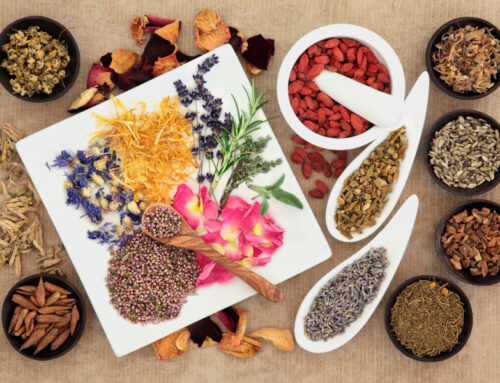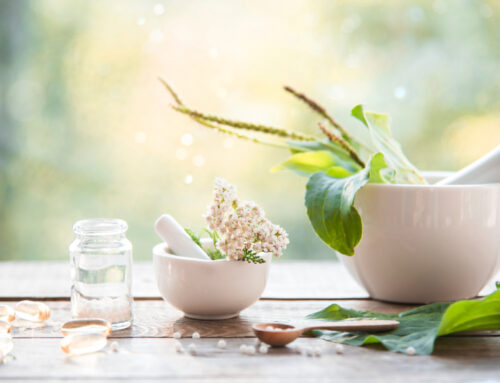By: Dr. Alexia Georgousis ND
Living in Canada, most of us have heard of Seasonal Affective Disorder also known as the winter blues. SAD was described in the 1984 by Dr. Norman Rosenthal MD and has been studied for many years. The exact etiology of SAD has not been determined. Oddly enough, women are four times more likely to develop SAD than men. There is evidence that SAD symptoms during the winter are correlated with a lack of outdoor (environmental) light. When we don’t get enough outdoor light, our bodies do not produce enough serotonin and melatonin. Serotonin is a chemical and neurotransmitter that is believed to play an important role in mood, appetite, social behaviour as well as sleep and sexual function. It is found in the brain, blood and bowel. Melatonin is a hormone produced mostly by the pineal gland in the brain and is strongly linked to our sleep wake cycle (circadian rhythm). The amount of melatonin secreted is inversely related to the amount of light the retina receives. It makes sense then that SAD is generally more prevalent in the winter and especially in areas further from the equator. However, there is a much less common form of SAD that occurs in the summer and is thought to be connected to too much sunlight. Go figure?!
The amount of outdoor light is one of the contributing factors to SAD – others include a history of depression and not surprisingly, stress levels.
Here are some common symptoms of SAD:
– lethargy
– need for more sleep
– anxiety
– decreased ability handle stress compared to other seasons of the year
– feeling of gloom; withdrawal from social activities
– increased appetite for carbohydrates including sugar
From a naturopathic perspective, all of this is valuable information but there are two key questions missing:
- Our cold and dark winters have been around for eons – so how are our lives different now than the pre SAD days i.e. 80’s and earlier.
- Why are women four times more likely to develop SAD compared to men?
In an attempt to identify root cause; here’s a summary of the technology launched in the ‘80’s:
- Home computers
- CDs, Walkmans
- Video game consoles
- Cable television
- Cell phones
Take a moment to ask yourself how this technology may have impacted your lifestyle?
It’s safe to say that the 80’s was the start of society becoming more insular; shifting us indoors, slowly causing us to be less interactive (face to face ) with each other, and leading us down the path of a more sedentary lifestyle. The time before remote controls and cell phones people had to get up to change the channel and usually go to the phone to make a phone call, rather than have our phones be an extra appendage.
Why is it that women are four times more likely to develop SAD than men? The general theories suggest that a woman’s hormonal changes may play a part and that women may be more expressive about their symptoms than men, so SAD symptoms are easier to recognize.
In summary, there are many factors contributing to the development of SAD; less outdoor light exposure, less social interaction, more time interacting with technology, more sedentary lifestyles and possibly hormonal fluctuations. Remember however, the body, mind and spirit know how to heal – they just require regular attention and care. This means physical nourishment, movement as well as emotional nourishment; connecting with others and spending time in nature.
Here are some additional ideas to support you through the winter blues:
- Go Outside: Even when it’s cold and or dark or at least sit near a window as a source of outdoor light. The fresh air is also a great boost to vitality.
- Indoor Light Therapy: desk size units are available for purchase. Studies demonstrate exposing patients to specific doses of light via full spectrum bulbs, mimic outdoor light, may be effective in helping individuals with SAD.
- Counselling: Get support from a health care professional. Talking about your experience is helpful – you are not alone.
- Meditation:Learn to practice being in the moment fully and adjust your expectations; often it is the stories we tell ourselves that cause our suffering. There are many free apps available.
- Exercise Regularly: Exercise (aerobic especially), increases serotonin levels and it seems one hour outdoors has the same benefits of 2.5 hours of indoor light therapy. Exercise is also helpful for stress management.
- Eat Well & Stay Hydrated: Avoid alcohol and refined sugar; both contribute to depressive symptoms.
- Keep a regular sleep and wake schedule.
- Vitamin D3, fish oil, probiotics, and for women – hormone balancing herbal medicines: Each help support your brain, gut, mood and menstrual cycle.
- Be Spontaneous and Unplug: Variety and creativity is the spice of life – do things just because and without your phone or computer.
- Socialize Regularly: We are social beings and need connection. Rather than text or email see if you can meet people in person for a visit.
References:
- https://www.normanrosenthal.com/seasonal-affective-disorder/
- https://www.popularmechanics.com/technology/gadgets/g1137/how-80s-technology-made-the-modern-world/
- https://www.ncbi.nlm.nih.gov/pmc/articles/PMC3004726/
- https://www.medscape.org/viewarticle/550845
- https://www150.statcan.gc.ca/n1/pub/11-630-x/11-630-x2015009-eng.htm
- https://www.ncbi.nlm.nih.gov/pmc/articles/PMC3004726/
- https://www.sovhealth.com/mental-health/learning-seasonal-affective-disorder-history-handle/






